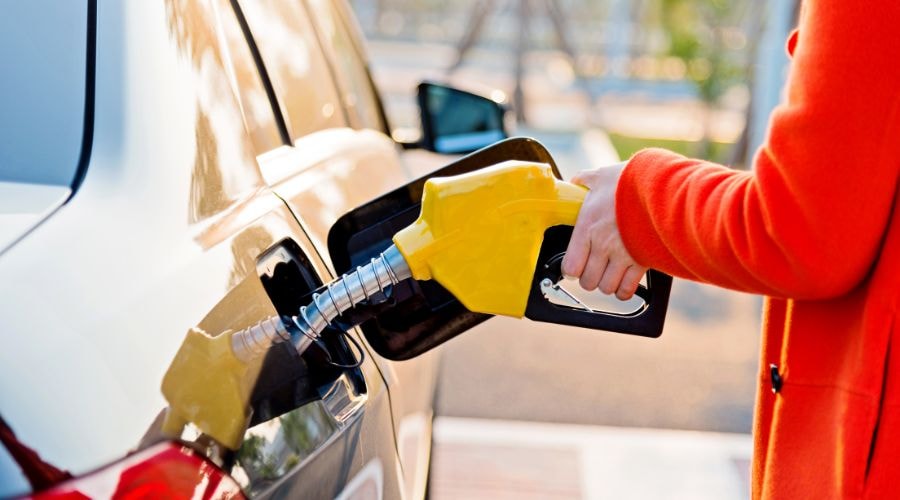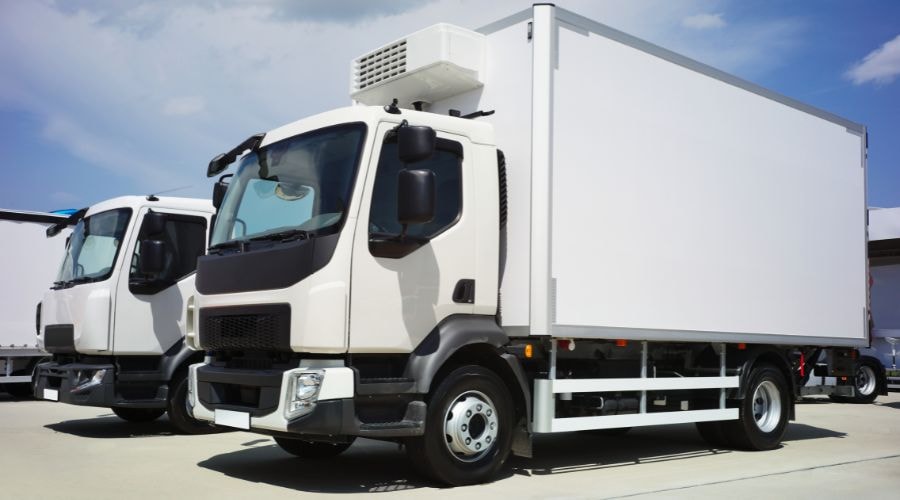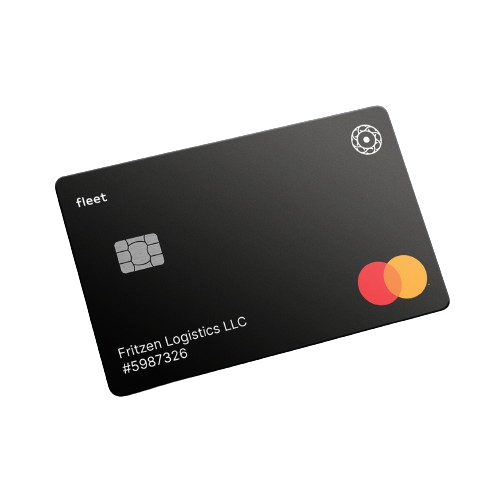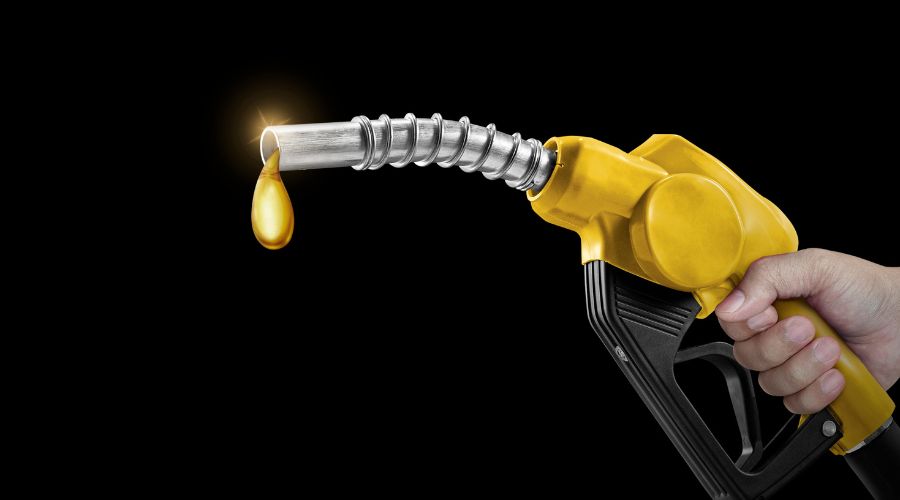With fuel costs representing up to 40% of total operating expenses for trucking companies and owner-operators spending $50,000 to $70,000 annually on diesel, the question "Are fuel cards worth it?" has never been more critical for transportation professionals.
Rising fuel prices, razor-thin profit margins, and increasing operational complexities make every cost-saving opportunity valuable; however, not all fuel cards come without fees, restrictions, and varying discount structures that require careful evaluation.
Key Takeaways
• Fleet fuel cards can save 10-30 cents per gallon on average, potentially generating $3,600-$18,000 in annual cost savings for typical operations
• Hidden fees and restrictions can significantly reduce actual savings if not properly evaluated
• ROI typically ranges from 300-500% when fuel card programs are selected and used strategically
• Cash flow improvements often provide as much value as direct fuel discounts
• Small fleets and owner-operators benefit most from universal acceptance cards with transparent fee structures
• Are fuel cards worth it? Yes, for most trucking operations that consume over 500 gallons monthly
{{CTA}}
Is Getting a Fuel Card Worth It?

Getting a fuel card is worthwhile for the vast majority of trucking operations, but its value depends heavily on proper selection and usage strategies. Recent industry analysis indicates that fuel cards yield average return on investment rates of 300-500% when implemented effectively, with direct fuel savings representing just one component of the total program value.
The primary value proposition stems from immediate per-gallon discounts ranging from 10 to 30 cents, depending on the fuel card provider and location. For an owner-operator with high fuel consumption consuming 20,000 gallons annually, even modest 20-cent discounts generate $4,000 in direct savings.
However, the total value extends beyond fuel discounts to include:
• Cash flow improvements through weekly payment terms instead of immediate cash requirements
• Administrative cost reductions via automated expense tracking and IFTA tax reporting
• Fraud protection and spending controls that prevent unauthorized purchases
• Route optimization tools that help locate the cheapest fuel prices
The break-even analysis typically favors fuel cards for any operation that consumes more than 500 gallons of fuel per month. Below this threshold, monthly fees and administrative overhead may exceed potential savings unless the operation can utilize fee-free programs or high-discount specialized networks.
How Much Money Can You Save with Fuel Cards?
Actual fuel card savings vary significantly based on the selection of fuel card provider, fuel usage patterns, and operational characteristics, with documented savings ranging from minimal to substantial, depending on the implementation effectiveness.
Direct Fuel Discount Savings
Real-world savings data show considerable variation across different fuel card programs and usage scenarios:
• Universal cards: 5-15 cents per gallon average discounts
• Network-specific cards: 15-45 cents per gallon at participating locations
• Specialized trucking cards: 25-50 cents per gallon at truck stops
• Regional programs: 10-30 cents per gallon within service areas
Annual Savings Examples by Fleet Size
Additional Cost Savings Beyond Fuel Discounts
• Administrative time savings: $2,000-$5,000 annually for small fleets
• Vehicle maintenance discounts: 10-20% savings at participating service centers
• Cash flow improvements: Equivalent to 2-5% annual working capital financing
• Fraud prevention: Avoided losses averaging $1,000-$3,000 annually per operation
What Are the Real Costs of Fuel Cards vs Benefits?
Understanding the complete cost structure requires analyzing both visible fees and hidden charges that can significantly impact net program value and overall fuel expenses.
Common Fee Structures
Monthly Fees:
• Account fees: $0-$99 per month
• Per-card fees: $0-$10 per card monthly
• Transaction fees: $0-$5 per transaction
Setup and Administrative Fees:
• Application/setup: $0-$50 one-time
• Card replacement: $5-$25 per card
• Statement processing: $0-$15 monthly
Hidden Cost Considerations
• Inactivity fees: $5-$25 monthly for unused cards
• Out-of-network penalties: $3-$10 per transaction
• Over-limit charges: 5-15% of excess amount
• Late payment penalties: $25-$50 plus interest
Cost-Benefit Analysis Framework
The net benefit calculation should consider total costs against combined cost savings from fuel discounts, administrative efficiencies, and cash flow improvements.
Are Fuel Cards Worth It for Small Businesses?

Small trucking businesses with 2-10 vehicles often achieve the highest return on investment from fleet fuel card programs due to their ability to capture enterprise-level benefits without requiring large-scale operations.
Advantages for Small Fleets
Small businesses gain proportionally more value from fuel cards because they typically:
• Lack economies of scale for direct fuel supplier relationships
• Have limited administrative resources for manual expense management
• Need cash flow management more than larger operations with better access to credit
• Benefit from centralized controls without complex fleet management systems
Recommended Strategies for Small Businesses
• Prioritize universal acceptance over maximum discount rates for operational flexibility
• Choose account-based fees over per-card fees when operating multiple vehicles
• Focus on programs with comprehensive reporting to reduce administrative overhead
• Evaluate integrated services like factoring or vehicle maintenance discounts for additional value
Small fleets consuming 2,000-5,000 gallons monthly typically achieve 400-600% ROI through effective fuel card programs, making them among the highest-value investments available to these businesses.
{{CTA}}
When Do Fuel Cards Make Sense for Owner-Operators?
Owner-operators benefit from fuel cards when they consume over 800 gallons of fuel per month and prioritize cash flow management alongside fuel cost savings. The single-truck business model creates unique considerations that affect fuel card value calculations.
Owner-Operator Success Factors
High-Value Scenarios:
• Operations consuming 1,500+ gallons monthly
• Businesses with consistent routes through discount networks
• Operators prioritizing cash flow over maximum discounts
• Single-truck businesses needing simplified administration
Lower-Value Scenarios:
• Seasonal operations with extended inactive periods
• Highly variable routing patterns
• Operations with existing fuel supplier relationships
• Single-truck businesses consuming under 500 gallons monthly
Cash Flow Impact for Owner-Operators
The working capital benefits often equal or exceed direct fuel savings for owner-operators:
• Traditional payment: Immediate $6,000-$8,000 monthly cash requirement
• Fuel card payment: 7-30 day payment terms, freeing up working capital
• Cash flow value: Equivalent to 15-25% annual percentage rate financing benefit
How Do Fuel Card Savings Compare to Cash Discounts?
Cash discount programs at fuel stations typically offer savings of 3-10 cents per gallon compared to credit card payments, while fleet fuel cards can provide discounts of 10-30 cents per gallon at participating locations.
Direct Comparison Analysis
Combined Benefits Analysis
Fleet fuel cards often provide superior total value by combining:
• Higher discount rates than cash alternatives
• Automated documentation for tax reporting and compliance
• Credit terms that improve cash flow management
• Fraud protection that cash payments cannot provide
Operations that can consistently utilize fuel card discount networks typically achieve 2-3x better savings than cash-only strategies while reducing administrative overhead.
Are Premium Fuel Cards Worth the Extra Cost?
Premium fuel card programs with higher fees can be worth the extra cost for operations that can effectively utilize their enhanced discount networks and additional services.
Premium Program Features
Enhanced Services:
• Higher per-gallon discounts (30-50¢ vs 10-20¢)
• Dedicated customer service and account management
• Advanced reporting and analytics capabilities
• Integrated vehicle maintenance and service discounts
Additional Costs:
• Monthly fees: $50-$200 per account
• Higher transaction fees
• Minimum volume requirements
• Setup and activation charges
Break-Even Analysis for Premium Programs
Premium programs typically require 3,000+ gallons of monthly fuel consumption to justify additional costs:
• 5-truck fleet: Additional $1,200 annual fees justified by extra 10¢/gallon savings
• 10-truck fleet: Premium programs almost always provide positive ROI
• Single trucks: Rarely cost-effective unless specialized routing allows high discount utilization
How Do You Calculate ROI on Fuel Cards?

Calculating fuel card ROI requires a systematic analysis of all cost components and benefit categories to determine the true fuel card program value.
ROI Calculation Framework
Step 1: Calculate Direct Fuel Savings
Monthly gallons × average discount per gallon × 12 months = Annual fuel savings
Step 2: Add Operational Benefits
• Administrative time savings: $2,000-$5,000 annually
• Cash flow value: 2-5% of monthly fuel spend
• Fraud prevention: $500-$2,000 annually
Step 3: Subtract Total Costs
• Monthly fees × 12
• Transaction fees × annual transactions
• Hidden fees and penalties
ROI Formula
ROI = (Total Annual Benefits - Total Annual Costs) / Total Annual Costs × 100
Example ROI Calculation
3-Truck Fleet:
• Monthly fuel: 3,000 gallons
• Discount: 25¢ per gallon
• Annual fuel savings: $9,000
• Administrative savings: $3,000
• Total benefits: $12,000
• Annual costs: $600
• ROI: ($12,000 - $600) / $600 = 1,900%
Get started with AtoB to calculate your specific savings potential.
When Might Fuel Cards NOT Be Worth It?
Despite their broad applicability, fuel cards may not provide adequate value for certain operational profiles and business models.
Low-Value Scenarios
Minimal Fuel Consumption:
• Operations using under 300 gallons monthly
• Seasonal businesses with extended inactive periods
• Mixed fleets with significant non-fuel expenses
Existing Cost Advantages:
• Direct supplier relationships with better pricing
• Comprehensive fleet programs with fuel components
• Cash-only operations achieving consistent high discounts
Operational Constraints:
• Highly restricted routing limiting network access
• International operations requiring specialized payment methods
• Businesses prioritizing vendor relationship consolidation
Alternative Strategies
For operations where fuel cards don't provide adequate value:
• Direct supplier contracts for high-volume operations
• Fleet charge accounts with regional fuel suppliers
• Credit cards programs with fuel-specific rewards
• Hybrid approaches combining multiple cost-reduction strategies
FAQs
Do you need a minimum number of vehicles to make fuel cards worthwhile?
No minimum vehicle count is required for fuel cards to be worthwhile. Single-truck owner-operators often achieve excellent ROI, though the optimal card type varies by fleet size. Operations with a few vehicles should prioritize universal acceptance and fee-free programs, while larger fleets can benefit from volume-based discount tiers and account-level fee structures.
Can part-time drivers benefit from fuel cards?
It depends. Part-time drivers can benefit from fuel cards if they consume over 200 gallons of fuel per month and avoid programs with inactivity fees. The key considerations are total monthly fuel usage and consistent card utilization. Programs with no monthly fees work best for part-time operations, while those with minimum usage requirements may impose penalties during slower periods.
Are there fuel cards with no monthly fees?
Yes, many fuel card providers offer no monthly fees, including the Truckstop Fuel Card, certain Voyager programs, and some regional offerings. However, fee-free programs may have higher transaction fees, lower discount rates, or other cost components. AtoB fuel cards provide competitive pricing with transparent fee structures designed for trucking companies.
How quickly do fuel card savings pay for themselves?
Fuel card savings typically cover program costs within 1-3 months for operations consuming over 1,000 gallons of fuel per month. Higher fuel consumption and better discount utilization accelerate payback periods. The ongoing ROI continues indefinitely as long as the program remains cost-effective and operationally suitable.
Do fuel cards affect business credit scores?
Fleet cards can positively impact a business's credit score when providers report payment history to business credit bureaus. Consistent on-time payments help establish credit history for newer businesses and maintain strong scores for established operations. Some programs specifically market credit-building benefits as additional value propositions, even for operations with poor credit.
Can seasonal businesses benefit from fuel cards?
Seasonal businesses can benefit from fuel cards by selecting programs without inactivity fees and timing activation to coincide with peak operating periods. The key is selecting programs that accommodate variable usage patterns without penalty charges during slow seasons. Some fuel card providers offer seasonal account suspensions or reduced fees during periods of inactivity.
Are fuel cards worth it if you mainly use one gas station brand?
Single-brand loyalty may not maximize fuel card value, as brand-specific cards often provide the best discounts at their affiliated locations. However, universal fuel cards provide operational efficiency that may slightly outweigh lower discount rates. Consider both your typical routing patterns and the potential for operational changes when evaluating brand-specific versus universal programs.
Do fuel card discounts apply to all types of fuel?
Fuel cards typically offer discounts that apply to both diesel and gasoline, although discount rates may vary by fuel type. Some programs provide higher discounts for diesel fuel purchases, reflecting their focus on commercial trucking operations. Premium fuel grades may have different discount structures or restrictions depending on the specific program terms.
Can you cancel fuel cards without penalties?
Most fuel card programs allow cancellation without penalties, though some may require advance notice or have minimum usage periods. Review contract terms carefully before enrollment to understand cancellation procedures and any potential fees. Month-to-month programs typically offer the most flexibility for adapting to changing operational needs.
Are there fuel cards that work for both gas and diesel?
Yes, most modern fuel cards are compatible with both gasoline and diesel fuel purchases. Universal acceptance cards offer the broadest fuel type coverage, while specialized trucking cards primarily focus on diesel but typically accommodate gasoline when needed. Review the specific program terms to ensure coverage aligns with your operational requirements.
Conclusion
Are fuel cards worth it? Yes, fuel cards are worth it for the vast majority of trucking operations, providing compelling ROI through direct fuel savings, operational efficiency, and cash flow improvements. With average returns of 300-500%, fuel cards represent one of the highest-value investments available to transportation businesses of all sizes.
The key to success lies in matching program characteristics to operational requirements while understanding total costs and benefit opportunities. Fleet managers and owner-operators benefit most from universal acceptance programs with transparent fee structures, while larger fleets can leverage volume-based discounts and comprehensive fleet management capabilities.
For trucking businesses evaluating the adoption of fuel cards, the evidence strongly supports implementation when approached with a comprehensive cost-benefit analysis and realistic usage projections. Fleet fuel cards offer substantial savings, streamlined expense management, and strategic advantages that can significantly impact profitability and operational effectiveness. These programs help track expenses, set spending limits, and manage fuel expenses, while providing access to a combined network of fuel stations and gas stations nationwide.
Get started with AtoB to discover your specific savings potential and join thousands of trucking professionals who have transformed their fuel management through strategic fuel card implementation.
{{CTA}}
Citations:
[1] https://truckstop.com/blog/best-fuel-cards-for-owner-operators/
[2] https://www.nerdwallet.com/p/best/small-business/fleet-fuel-cards
[3] https://vivacf.net/insights/benefits-fuel-cards-trucking-business/
[4] https://blog.summar.com/fuel-cards-drive-roi-for-trucking-companies
[5] https://blog.truckerguideapp.com/post/top-10-best-fuel-cards-for-small-trucking-companies-in-2025
[6] https://www.rtsinc.com/articles/roi-fuel-cards-calculating-long-term-savings-your-trucking-company
[7] https://www.pfleet.com/blog/best-fleet-fuel-cards-for-business
[8] https://ecapital.com/blog/why-trucking-companies-use-fuel-cards-vs-credit-cards-in-2023/
[9] https://www.rtsinc.com/articles/fuel-cards-owner-operators-maximizing-benefits-smaller-scale
Get started with AtoB

Reviewed by
Vedant Khamesra is the driving force behind product management at AtoB. Specializing in strategic partnerships, SMB solutions, and new product development, Vedant seamlessly navigates P&L responsibilities while leading product execution and strategy. He is fueled by AtoB's mission to empower truckers and fleets with intelligent financial tools and services, making their lives easier and more rewarding.



